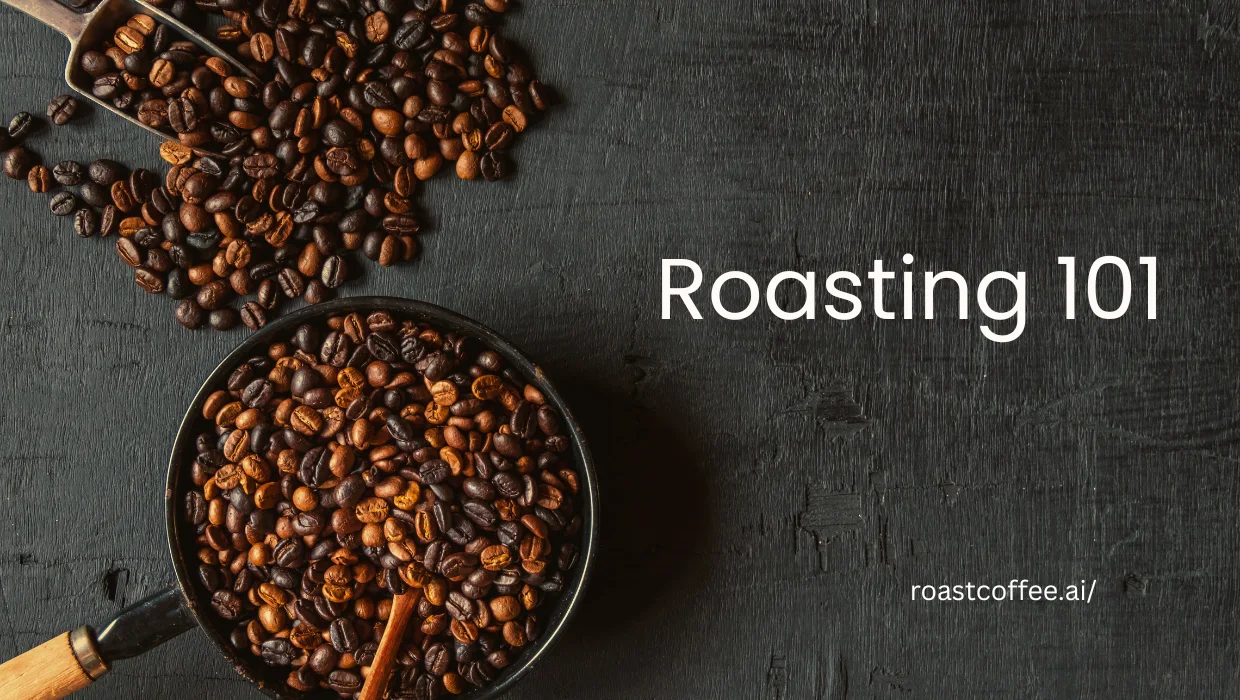Know Your Coffee Green Beans: Brazil Santos
Welcome back to the heart of coffee! In this post, we’re diving into a global powerhouse: Brazil Santos. This region is a cornerstone of the coffee industry, celebrated for its vast production and its role as a staple for roasters and blenders worldwide. Santos coffees are the epitome of a classic, approachable, and mild cup, showcasing a delightful blend of chocolate and nutty notes that are both comforting and satisfying.
🌍 Where It Is Grown
Santos is a key port city in Brazil, serving as the primary export hub for coffee grown in the surrounding states of São Paulo and Minas Gerais. The name “Santos” is more of a market grade than a specific growing region, representing the consistent quality of coffee beans that pass through its port. The vast majority of these beans come from large, highly efficient farms.
- Varietals & Growing Conditions: The primary varietals are Arabica varieties like Bourbon, Catuai, and Mundo Novo.
- Soil: The soil varies but is generally fertile and well-suited for large-scale coffee cultivation.
- Microclimate: Brazil’s tropical climate with distinct wet and dry seasons and its generally flat to rolling terrain make it a powerhouse of coffee production.
- Altitude: 800 to 1,200 meters. The relatively lower altitude compared to high-grown specialty coffees contributes to the bean’s lower acidity and mellower flavor profile.
- Sustainability: While a significant portion of Brazil’s production is large-scale and conventional, there is a growing movement toward sustainable and certified farming practices, including Fair Trade and Rainforest Alliance certifications, especially on smaller, family-owned farms.
☕ What It Tastes Like
Brazil Santos is famous for its classic, approachable, and low-acidity flavor profile. It’s a coffee that offers a consistently mild and pleasant experience, making it a favorite for everyday drinking and as a foundational component in espresso blends.
- Expect a clean, balanced, and smooth cup with a medium body.
- The acidity is typically low and subtle, which is a key characteristic that makes this coffee so versatile and easy to drink.
- The body is medium, providing a creamy and smooth mouthfeel.
- Common notes include milk chocolate, toasted nuts (peanut, almond), and a subtle caramel sweetness. It is rarely fruity and has a sweet, clean, and consistent finish.
💰 Market / Price Insights
- Pricing: As one of the world’s largest coffee producers, Brazil Santos is a high-volume, affordable coffee. Its consistent quality and widespread availability make it an economical choice for roasters and consumers, serving as a reliable backbone for many coffee blends.
- Sustainability Efforts: Brazil has made significant strides in adopting more sustainable farming practices, from water conservation to shade-grown methods. Cooperatives and large farms are increasingly investing in certifications to meet global demand for ethically and environmentally sourced coffee.
💧 Processing Method
The most common and traditional method for Brazil Santos is the natural (or dry) process, which is a key factor in its mellow, nutty, and chocolatey flavor profile.
- Natural Process: The ripe coffee cherries are harvested and laid out to dry in the sun, often on large patios. The entire cherry is left intact, allowing the sugars from the fruit to infuse the bean as it dries. This process takes a few weeks and requires careful turning to ensure even drying. Once dry, the outer layers of the cherry are removed.
- Flavor Differences: The natural process enhances the coffee’s body and sweetness while muting its acidity. It contributes to the classic nutty and chocolatey notes that Brazil Santos is known for.
🔥 How to Roast It
Roasting Brazil Santos is a satisfying experience due to its uniform size and density. It is an excellent bean for beginners to practice with.
- For Beginners: A medium roast is the ideal starting point. This roast level will develop the coffee’s prominent chocolate and nutty notes while preserving a balanced sweetness and low acidity. The beans will develop color evenly, and the first crack will be clear.
- For Advanced Roasters: You can push the roast to a medium-dark (Full City) to develop a richer, more robust chocolate flavor, or keep it on the lighter side of medium to highlight its delicate sweetness. Its consistency makes it easy to achieve a predictable and repeatable roast profile.
💡 Post Roasting Requirement
Allow the roasted beans to rest for at least 3-5 days. This degassing period is crucial for the coffee’s flavor to fully develop and for its distinctive balance to settle into a rich, cohesive cup.
Store the beans in a cool, dark place in an airtight container to maintain freshness.
😋 Flavor Profile / Tasting Notes
- Cupping Descriptors: When cupping a naturally processed Brazil Santos, expect a clean aroma of chocolate and nuts. The taste profile is a classic mix of milk chocolate and toasted nuts, with a sweet, long, and satisfying finish.
- Comparisons: Its balanced, low-acidity profile makes it a great everyday drinker. It’s often compared to a classic, comforting cup of coffee that is consistently reliable and delicious.
☕ Brewing Recommendations
To get the most out of Brazil Santos’ smooth and classic flavor, choose brew methods that highlight its body and approachable notes.
- Drip Coffee Maker: The perfect method for a consistently delicious and easy-to-make cup.
- French Press: A French Press will accentuate the coffee’s medium body and rich, comforting flavors, providing a satisfying and robust cup.
- Espresso: Its low acidity and rich flavor make it a fantastic base for espresso, providing a creamy body and a chocolatey crema.
A Legacy of Global Influence
While Brazil Santos may not have a single famous legend like Kaldi, the story of coffee in Brazil is one of scale, innovation, and global influence. As the world’s leading coffee producer for over 150 years, Brazil has shaped the way the world drinks coffee. The consistent, high-quality “Santos” grade has become a benchmark for accessible and delicious coffee.
Brazil’s coffee industry has been a driving force behind agricultural advancements, from mechanized farming to genetic research on coffee varietals. The vast scale of production allows for an unparalleled consistency, making Brazil Santos a reliable choice for roasters and consumers alike.
So, while not as famously named as some other regions, the story of Brazil Santos is one of dedication, consistent quality, and a commitment to producing a foundational coffee that is a cornerstone of the global coffee market.
❓ FAQs
Q: Why is Brazil Santos coffee often used in espresso blends?
A: Its low acidity, medium body, and classic chocolate and nutty flavor profile make it an ideal foundation for espresso blends, providing a smooth and rich base that complements other, more complex coffees.
Q: Is Brazil Santos coffee acidic?
A: No, it is known for its low acidity, which makes it a very approachable and easy-to-drink coffee.
Q: Where can I buy green Brazil Santos beans?
A: Reputable green coffee suppliers like Sweet Marias, Cafe Imports, and Genuine Origin often carry high-quality Brazil Santos beans.
So, go ahead and explore this classic coffee. Its reliable flavors and consistent quality are a testament to the dedication of Brazilian coffee farmers.
Until the next sip, keep exploring the world of coffee. Explore our roasting tips, or read about another gem in our “Know Your Coffee Green Beans” series!


